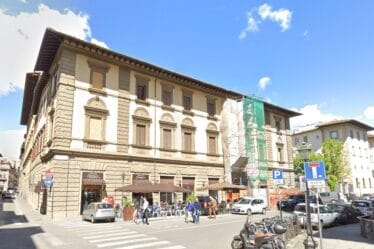

The Roman amphitheater of Florence is an authentic historical treasure, dating back to the 2nd century, whose remains are practically no longer visible between Piazza dei Peruzzi, Via dei Bentaccordi and Via Tòrta. Imagine walking among the ancient ruins and breathing in the atmosphere of a bygone era that marked the history of Florence.
Built between 124 and 130 AD, this majestic amphitheater was located outside the original city walls, marking the extreme expansion of Roman Florentia. With its elliptical shape and a maximum diameter of 126 meters, the amphitheater offered a breathtaking spectacle, with an internal audience 119×89 meters wide. Although more modest in size than the Colosseum, it could still accommodate around 20,000 spectators, creating a vibrant and engaging atmosphere during events.
The amphitheater is recognizable today also thanks to the remains of its load-bearing structures, even if (as happened with the amphitheater of Lucca) the overlapping construction of the medieval houses has hidden a large part of the ancient arches (fornices). Some houses overlooking Via Torta, built on the perimeter remains of the amphitheatre, using its own stones, represent today the only real visible trace, together with the arches on Palazzo Peruzzi, which trace the ancient entrances.
The entire structure has never been systematically excavated, but there have been some occasional discovery events. In 1887, during the excavations of a sewer system near Borgo dei Greci, part of the ancient ruins came to light, destined to be closed underground forever. But there is a model, originally preserved at the “Museo Firenze com’era”, in which you can observe the reconstruction of the shape of the city in Roman times, with the ancient walls, the forum and obviously the amphitheatre.
San Miniato also is ivolved in the history of this amphitheater. Tradition tells us that in 250 AD. the saint was beheaded in front of a large crowd. Then, indignant at the torture he had suffered, he stood up, picked up his head and left. He crossed the Arno and arrived on the first hill of the city. He died there and the famous church of San Miniato was built there in his honor.
If you like this story come with us to visit our Florence. We are running a Florence Free Tour, from santa Maria Novella square, in front of Minerva hotel its our meeting point. So book your tour and come with us to discovere myth and leggend of Florence, and many others curiosity.



